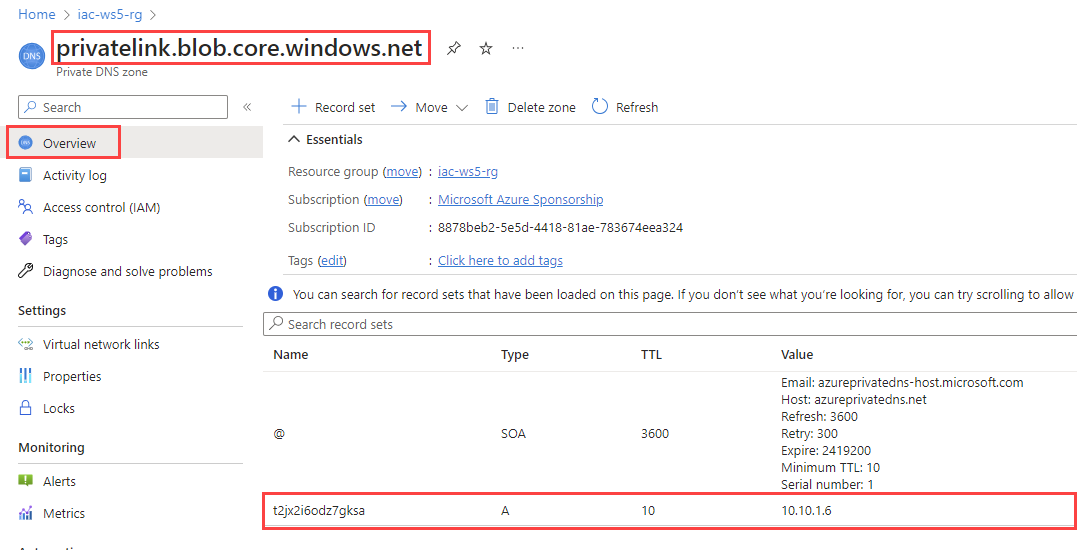lab-05 - Use Azure Policy to Create DNS Records for Private Endpoints (storage account)¶
As we already learned, Azure Private Link allows us to access Azure PaaS services over a private endpoint in virtual network. To make Azure PaaS resources accessible via Private link, we will need to:
- Create a private endpoint in the virtual network.
- Create a DNS record for the private endpoint on the specific Azure Private DNS Zone for the particular Private Link service
If you are operating under Azure Landing Zone Enterprise Scale architecture, your workload teams may hit the challenge of registering DNS records for the private endpoints because of security permissions.
The private DNS zones are typically deployed under Connectivity Landing Zone (aka Subscription). The Workload team will typically use Service Principal that is scoped with Contributor role at the scope of the workload subscription (or Resource Group). However, the Service Principal will not have permissions to create DNS records in the private DNS zone under Connectivity subscription and we don’t really want to assign this permission to every Workloads that need to create private endpoints.
In addition to that we also want to simplify the process of creating Private Endpoints for Workload owners, since they may not know which Private DNS zones are required for their services.
One of the solutions is to use Azure policy to automatically create the DNS records for the Private Endpoints to appropriate Private DNS zones using DeployIfNotExists effect.
In this lab we will create Azure Policy to create DNS record for the private endpoints for Azure Storage Account.
In this lab, we will be using Azure PowerShell module, so, before you start, make sure that the latest version is installed. See Install Azure PowerShell module for detailed information.
Task #1 - Create Azure Private DNS Zone for Blob (privatelink.blob.core.windows.net) using Bicep¶
Create new Bicep file called privateDNS.bicep with the following content:
param prefix string = 'iac-ws5'
var virtualNetworkName = '${prefix}-vnet'
resource vnet 'Microsoft.Network/virtualNetworks@2022-11-01' existing = {
name: virtualNetworkName
}
var privateDnsZoneName = 'privatelink.blob.${environment().suffixes.storage}'
resource privateDnsZone 'Microsoft.Network/privateDnsZones@2020-06-01' = {
name: privateDnsZoneName
location: 'global'
}
resource privateDnsZoneVnetLink 'Microsoft.Network/privateDnsZones/virtualNetworkLinks@2020-06-01' = {
name: uniqueString(vnet.id)
parent: privateDnsZone
location: 'global'
properties: {
registrationEnabled: false
virtualNetwork: {
id: vnet.id
}
}
}
Save the file and deploy it:
az deployment group create -g iac-ws5-rg --template-file .\privateDNS.bicep -n 'Deploy-Private-DNS-Zone'
It will create new Private DNS zone privatelink.blob.core.windows.net for Blob storage and link it to iac-ws5-vnet virtual network.
Task #2 - Create Azure Policy Definition¶
Next, deploy Azure Policy Definition for policy that will automatically create the DNS records under privatelink.blob.core.windows.net private DNS Zone for the Storage Account Private Endpoint.
The policy definition is stored in deploy-sa-blob-ple-dns-records.json file.
New-AzPolicyDefinition -Name 'deploy-sa-blob-ple-dns-records' -DisplayName 'Deploy Storage Account Blob Private Endpoint DNS Record' -Policy 'https://raw.githubusercontent.com/Infrastructure-AsCode/azure-private-links-labs/main/docs/labs/lab-05/deploy-sa-blob-ple-dns-records.json'
Task #3 - assign Azure Policy Definition¶
To get a better understanding of how Azure Policy assignment works, we will manually assign the policy definition from the portal. In the real world scenario, you will typically assign the policy definition with IaC.
Start by navigating to the Azure Policy blade in the Azure portal.
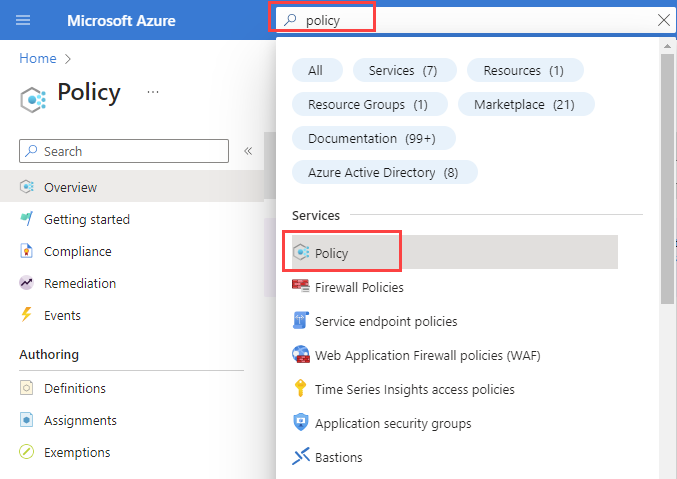
Goto Definitions and search for Deploy Storage Account Blob
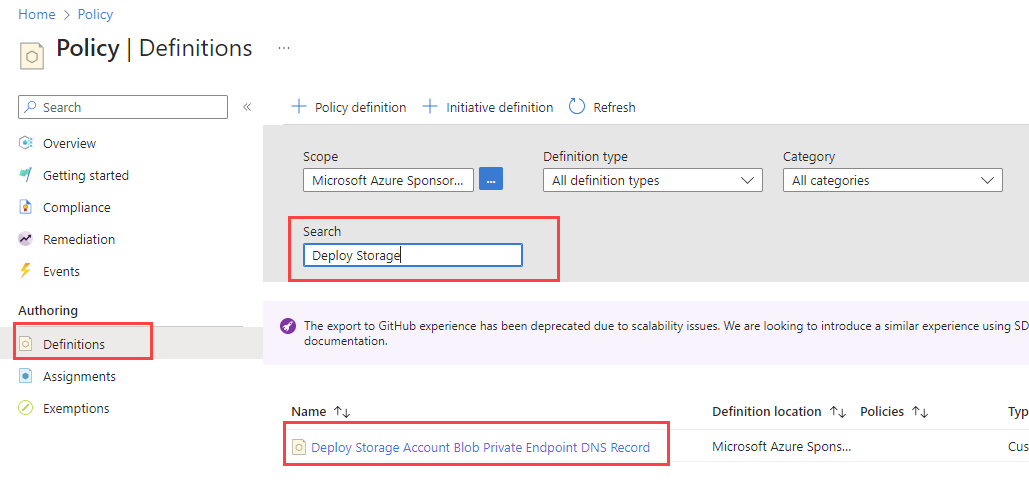
Open this policy definition and click Assign
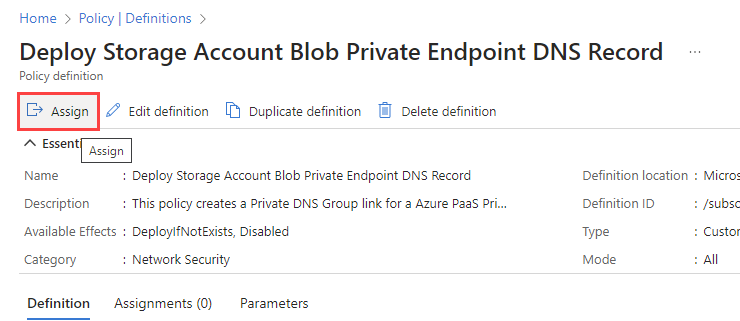
Select iac-ws5-rg Resource Group as a scope and click Next
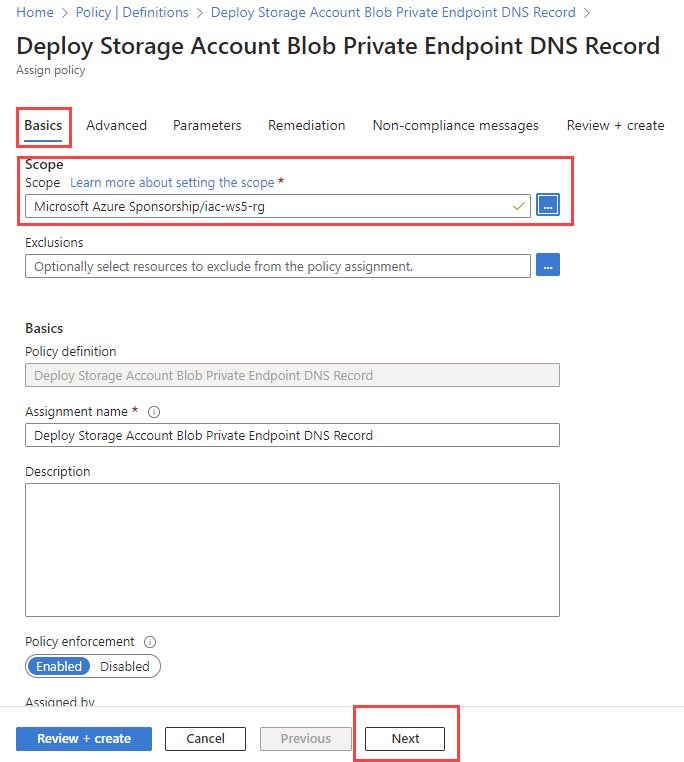
At the Advanced tab keep everything as default and click Next
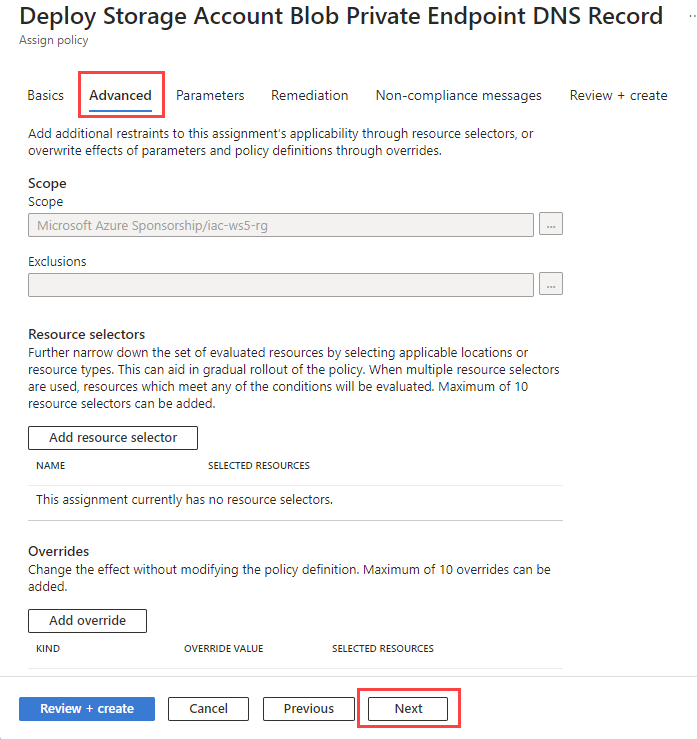
At the Parameters tab select privatelink.blob.core.windows.net as Private DNS Zone for Storage Blob parameter and click Next
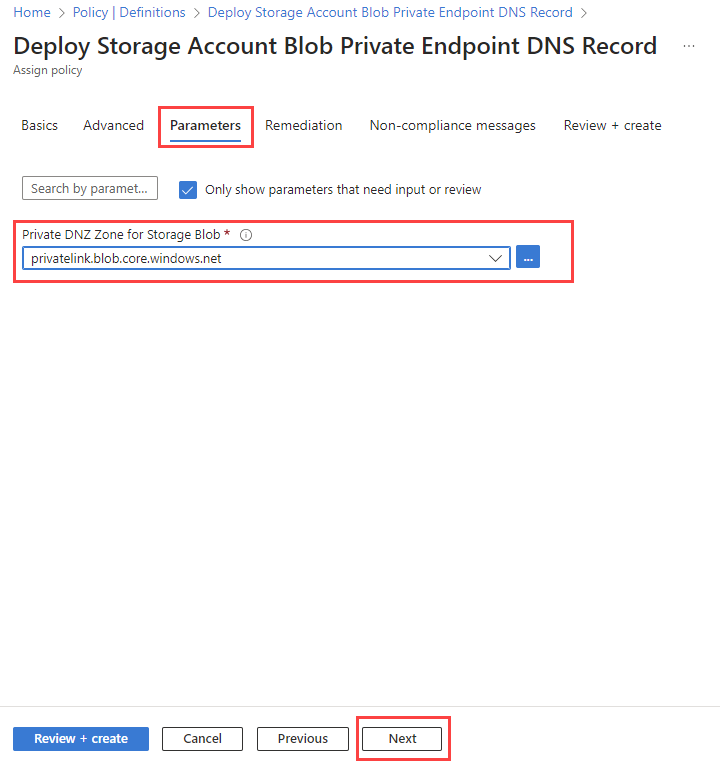
At the Remediation tab make sure that Create a Managed Identity is selected, choose Region for managed identity (West Europe if you follow the workshop convention) and click Next
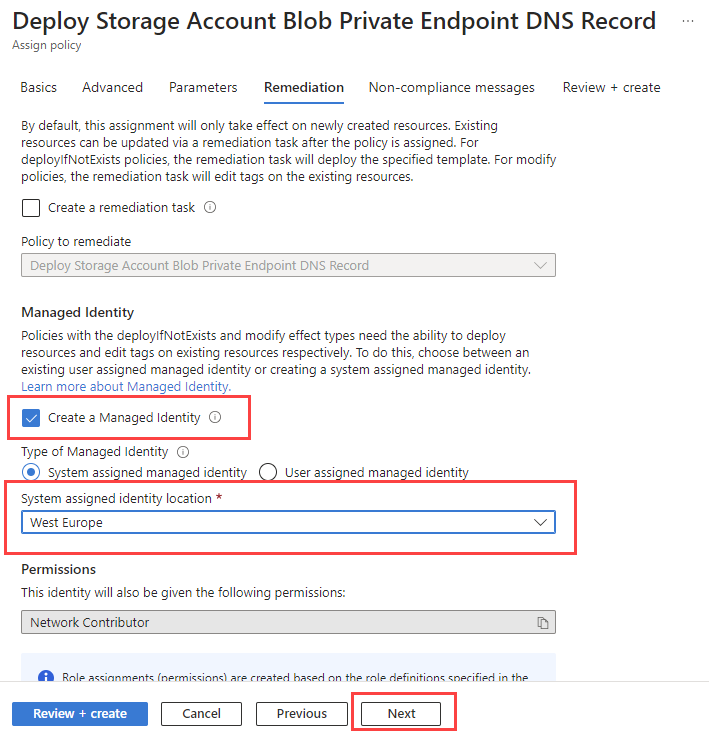
Click Review + create and then Create to assign the policy definition.
With policy assigned to our resource group, let's create new Storage Account with Private Endpoint for Blob storage.
Task #4 - implement and deploy Storage Account with Private Endpoint for Blob storage¶
Create new Bicep file called sa.bicep with the following content:
param location string = resourceGroup().location
param prefix string = 'iac-ws5'
var uniqueStr = uniqueString(subscription().subscriptionId, resourceGroup().id)
var saName = '${uniqueStr}sa'
var pleName = '${saName}-ple'
var virtualNetworkName = '${prefix}-vnet'
resource vnet 'Microsoft.Network/virtualNetworks@2022-11-01' existing = {
name: virtualNetworkName
}
resource sa 'Microsoft.Storage/storageAccounts@2022-09-01' = {
name: saName
location: location
sku: {
name: 'Standard_LRS'
}
kind: 'StorageV2'
properties: {
publicNetworkAccess: 'Disabled'
minimumTlsVersion: 'TLS1_2'
supportsHttpsTrafficOnly: true
}
}
var groupName = 'blob'
resource privateEndpoint 'Microsoft.Network/privateEndpoints@2022-09-01' = {
name: pleName
location: location
properties: {
privateLinkServiceConnections: [
{
name: pleName
properties: {
groupIds: [
groupName
]
privateLinkServiceId: sa.id
}
}
]
subnet: {
id: '${vnet.id}/subnets/plinks-snet'
}
}
}
Save the file and deploy it:
az deployment group create -g iac-ws5-rg --template-file .\sa.bicep -n 'Deploy-StorageAccount-With-Private-Endpoint'
It will deploy new Storage Account with Private Endpoint for Blob storage and disabled public access. If you wait some minutes and check the Resource Group Deployments, you will find that policy has been triggered and DNS record for the Private Endpoint has been created under privatelink.blob.core.windows.net private DNS Zone.
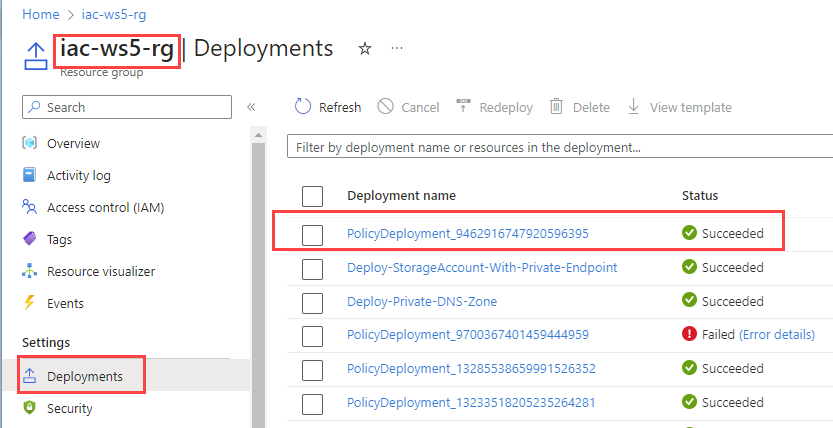
If you check the Private DNS Zone privatelink.blob.core.windows.net, you will find that new DNS record for Storage Account blob private endpoint has been created.
